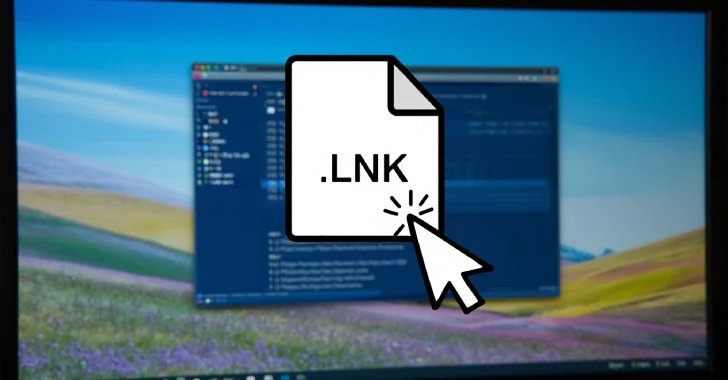Quick Takeaways
-
Targeted Campaign: The Patchwork threat actor is conducting a spear-phishing campaign targeting Turkish defense contractors to collect strategic intelligence, linked to geopolitical tensions involving Pakistan and India.
-
Execution Method: The attack utilizes a five-stage execution chain initiated through malicious LNK files disguised as conference invitations related to unmanned vehicle systems, culminating in PowerShell commands and payload downloads.
-
Expanded Footprint: This marks a significant expansion in Patchwork’s targeting, previously focused on South Asia, now including Türkiye, where it aims to exploit the country’s leadership in UAV exports and emerging hypersonic missile technology.
- Enhanced Capabilities: The group has advanced its tactics by transitioning from x64 DLL to x86 PE executables, improving command and control protocols, and facilitating extensive reconnaissance on compromised systems.
The Issue
On July 25, 2025, cybersecurity experts from Arctic Wolf Labs reported a sophisticated spear-phishing campaign orchestrated by the threat actor known as Patchwork, which targets Turkish defense contractors, including an unnamed manufacturer of precision-guided missile systems. This campaign employs a multi-layered execution chain initialized through malicious LNK files disguised as conference invitations related to unmanned vehicle systems. The geopolitical motivations behind this attack are underscored by the current strengthening of defense ties between Turkey and Pakistan amid ongoing military tensions with India, suggesting that the threat is strategically timed to exploit these dynamics.
Patchwork, assessed to be a state-sponsored actor of Indian origin with a history dating back to 2009, has expanded its scope to include Türkiye, leveraging advanced tactics such as PowerShell commands to fetch additional malware, including a DLL for reconnaissance and data exfiltration. This evolution in their methods indicates an investment in operational capabilities, shifting from x64 DLLs to more versatile x86 PE formats, highlighting a significant leap in their technical sophistication and strategic focus. The findings illustrate a subtle blend of cyber espionage and geopolitical maneuvering, with implications that reverberate throughout the defense sector in the region.
Potential Risks
The recent spear-phishing campaign orchestrated by the Patchwork group, targeting Turkish defense contractors, underscores a significant risk to the broader ecosystem of businesses, organizations, and users. If this malware proliferation extends beyond its current victims, it could catalyze a cascade of operational disruptions, particularly in sectors tied to defense and technology, where sensitive data becomes a tantalizing target for espionage. The exploitation of these LNK files not only jeopardizes the proprietary information of the immediate victims but, through inevitable data breaches, threatens to compromise critical supply chains and partnerships with other entities that share technological or strategic interests. This interconnectivity means that unsuspecting users and organizations could unwittingly become conduits for malware propagation, thus amplifying the risk of widespread systemic vulnerabilities that extend far beyond the original attack vector, potentially inciting financial losses, reputational damage, and a debilitating erosion of trust within and across industries.
Possible Actions
Timely Remediation Importance
In a rapidly evolving cyber threat landscape, especially with targeted operations like "Patchwork Targets Turkish Defense Firms," the urgency for prompt and effective remediation becomes paramount. Spear-phishing attacks utilizing malicious LNK files not only jeopardize sensitive data but can also disrupt national security. Therefore, a swift response is critical to mitigate potential damages.
Mitigation Steps
- User Training: Conduct comprehensive cybersecurity awareness programs to help employees recognize phishing attempts.
- Email Filtering: Implement advanced email filtering solutions to detect and block malicious attachments and links.
- Endpoint Protection: Deploy robust endpoint security solutions to identify and neutralize threats from malicious LNK files.
- Regular Software Updates: Ensure all systems and applications are current with the latest security patches to close vulnerabilities.
- Incident Response Plan: Develop and regularly update an incident response plan tailored to spear-phishing threats.
- Network Monitoring: Utilize continuous network monitoring to detect unusual activities indicative of a breach.
- Access Controls: Implement strict access controls limiting permissions based on the principle of least privilege.
NIST Guidance
According to the NIST Cybersecurity Framework (CSF), organizations should focus on Identify, Protect, Detect, Respond, and Recover principles to effectively manage cybersecurity risks. For more detailed guidance, refer to NIST Special Publication 800-53, which provides a comprehensive catalog of security and privacy controls that can be adapted to mitigate the threats posed by spear-phishing attacks.
Continue Your Cyber Journey
Discover cutting-edge developments in Emerging Tech and industry Insights.
Learn more about global cybersecurity standards through the NIST Cybersecurity Framework.
Disclaimer: The information provided may not always be accurate or up to date. Please do your own research, as the cybersecurity landscape evolves rapidly. Intended for secondary references purposes only.
Cyberattacks-V1

